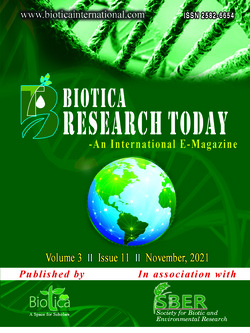
Value Added Products from Food and Kitchen Waste
Gowtham, S.
Dept. of Environmental Sciences, Tamil Nadu Agricultural University, Tamil Nadu (641 003), India
E. Parameswari*
Dept. of Environmental Sciences, Tamil Nadu Agricultural University, Tamil Nadu (641 003), India
M. Maheswari
Dept. of Environmental Sciences, Tamil Nadu Agricultural University, Tamil Nadu (641 003), India
DOI: NIL
Keywords: Food waste, Kitchen waste, Value added products, Waste management
Abstract
Food and kitchen waste which are ubiquitous across the world and good source of value added products due to its high organic content. Regardless of the presence of numerous conventional techniques like land filling or biogas generation to harness food waste energy, the heterogeneous nature of food and its high moisture content make effective conversion of food to useful resources are practically very difficult. The goal of this paper is to outline the benefits and drawbacks of food waste management. The various social, economic, and environmental issues associated with food waste management have also been discussed, especially in terms of greenhouse gas emissions and increased leachate formation rates. Food waste collection, storage, and bioconversion into valuable by-products have been recognized as a key obstacle to effective waste management. Finally, to emphasize the benefits of food waste management, a range of value-added products generated from food waste following pretreatment are presented.
Downloads
not found
Reference
Fadhil, A.B., Al-Tikrity, E.T., Albadree, M.A., 2017. Biodiesel production from mixed non-edible oils, castor seed oil and waste fish oil. Fuel 210, 721-728.
Saygili, H., Güzel, F., Önal, Y., 2015. Conversion of grape industrial processing waste to activated carbon sorbent and its performance in cationic and anionic dyes adsorption. Journal of Cleaner Production 93, 84-93.
Sebastian, S.P., Udayasoorian, C., Jayabalakrishnan, R.M., Paramesewari, E., 2009. Improving soil microbial biomass and enzyme activities by amendments under poor quality irrigation water. World Applied Sciences Journal 7(7), 885-890.
